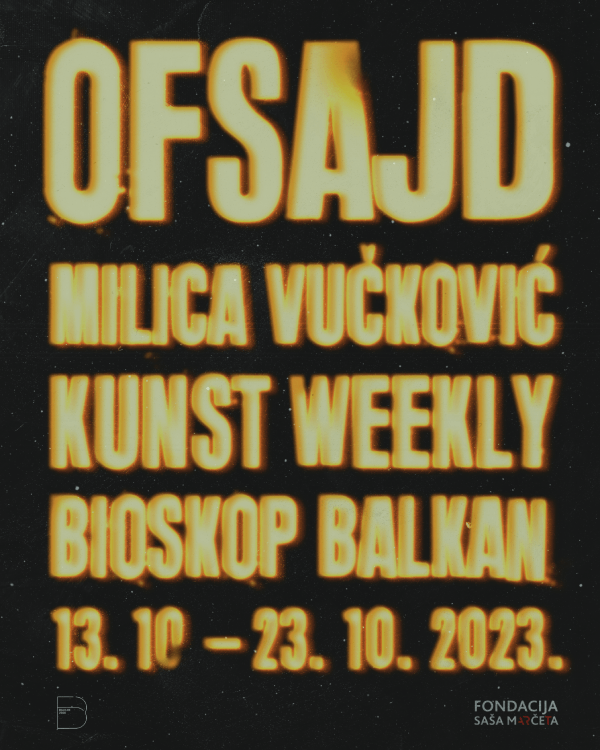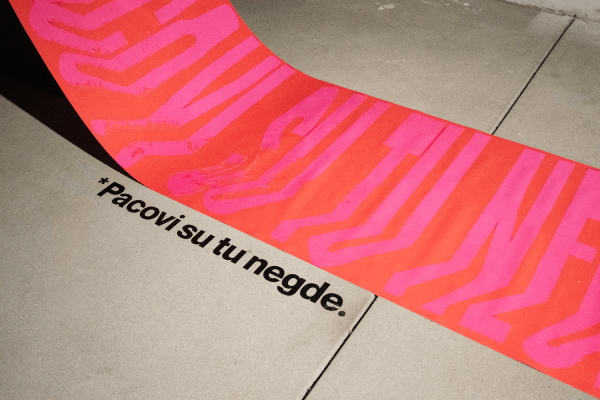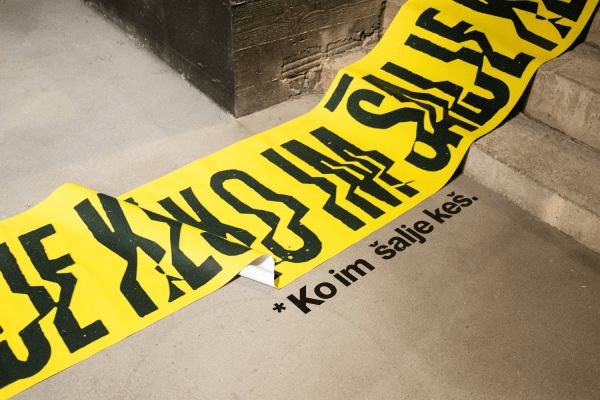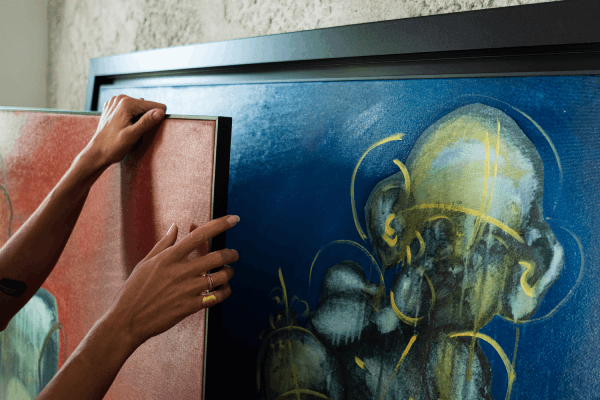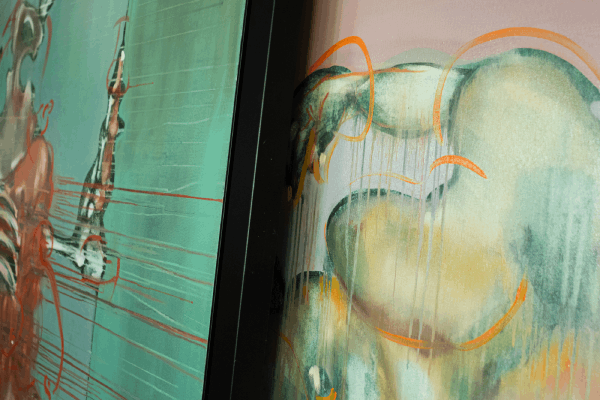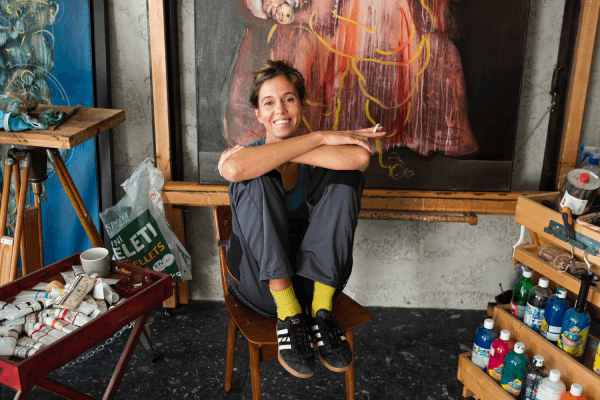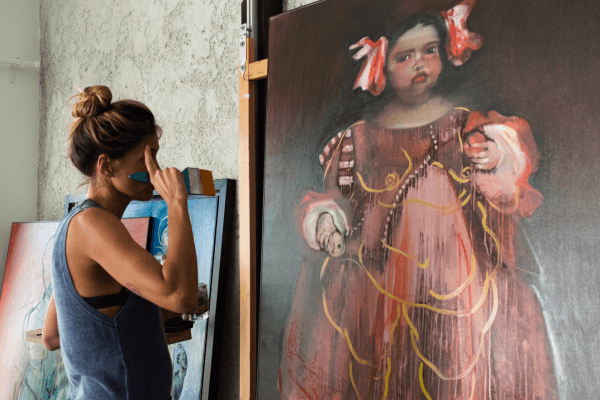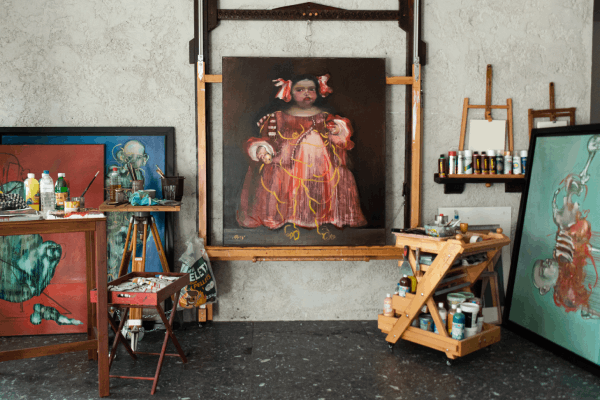Author’s Text by Mia Kisić
The central focus of the exhibition “Offside” is the exploration of questions surrounding the very nature of art – its content, impact, and audience. It presents viewers with two opposing narratives – one about Art with a capital “A,” self-sufficient, inward-looking, and belonging to gallery spaces, and the other about art that believes it can enter the everyday life of individuals, be socially engaged, and for which entering museum and gallery spaces may signal the end rather than the beginning of its influence.
This confrontation prompts a dialogue about the possibility – or even the necessity – of art to transcend the boundaries of the artificial and address the real world around it, including the social margins and what has traditionally been considered “non-artistic.”
The observer encounters three segments that, in their own way, communicate the question of art’s involvement in the field of social engagement. First, Milica Vučković’s paintings play with references to prominent works of art, choosing art as the subject of art, and using a traditional medium like painting to express a commentary on the principles of art’s self-sufficiency. On one hand, the paintings seem to offer an ironic take on such artistic practices, while on the other, they defend the right to that type of creation. Next, in Milan Maksimović’s work, the artist tries to find a way to incorporate engagement into their work: written sentences represent excerpts from the dominant discourse about “The Other,” which Milan introduces from the non-artistic domain (social media comments), choosing a conceptual medium to create an artistic object. Here, the artist acts as a mediator and commentator on social reality and some of its violent manifestations – but can they have the legitimacy to speak on behalf of such reality or those who live it? Finally, there is the street musician – a reality that represents itself, its voice, without interpretation. Brought into the field of art or the gallery space, they themselves become both an artistic object (and subject).
Can presentation then be replaced by artistic representation? What is the role of the artist as a creator or mediator in communicating socially engaged content? And if the artist is there merely to create a space for the marginalized voice to be heard – is there room for them in such art if they do not belong to those they speak for? Finally, who is the one this art addresses, and can they (or do they want to) be a carrier of social change?
The Offside exhibition leaves viewers to answer these questions through the clash of the three representations – and perhaps more than that, to reflect on their own responsibility as observers.
Photo: Izabela Milanović
